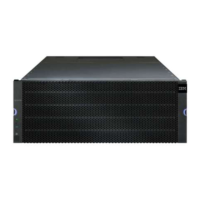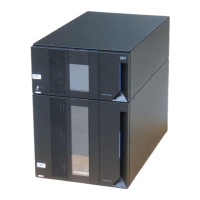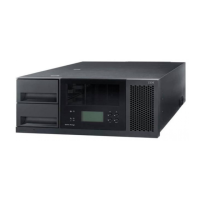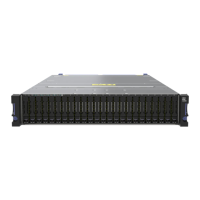Syntax
start subsystem [subsystemNumber] defragment
Parameter
Parameter Description
subsystem The alphanumeric identifier of the subsystem (including -
and _) that you want to defragment. Enclose the
subsystem identifier in square brackets ([ ]).
Notes
Host I/O errors might result in the subsystems with more than 32 logical drives. This operation also
might result in internal controller reboots because the timeout period ends before the subsystem
definition is set. If you experience this issue, quiesce the host I/O operations, and try the command
again.
Start subsystem Export
This command moves an subsystem into an Exported state. Then you can remove the disk drives that
comprise the subsystem and reinstall the disk drives in a different storage subsystem.
Note: Within the subsystem, you cannot move logical drives that are associated with the premium
features from one storage subsystem to another storage subsystem.
Syntax
start subsystem [subsystemNumber] export
Parameter
Parameter Description
subsystem The alphanumeric identifier of the subsystem (including - and
_) that you want to export. Enclose the subsystem identifier in
square brackets ([ ]).
Notes
When this command is successful, you can run the start subsystem import command to finish moving
the subsystem to a Complete state, which makes the subsystem available to the new storage subsystem.
If this command is unsuccessful because hardware problems prevented the completion of the export, use
the set subsystem forceState command. The set subsystem forceState command lets you use the
start subsystem import command to import an subsystem.
After the subsystem is in an Exported state or a Forced state, you can remove the disk drives that
comprise the subsystem from the storage subsystem. You can reinstall the disk drives in a different
storage subsystem.
Start array import
This command moves an array into a Complete state to make a newly introduced array available to its
new storage subsystem. The array must be in an Exported state or a Forced state before you run this
command. Upon successfully running the command, the array is operational.
Chapter 3. Script Commands 3-283

